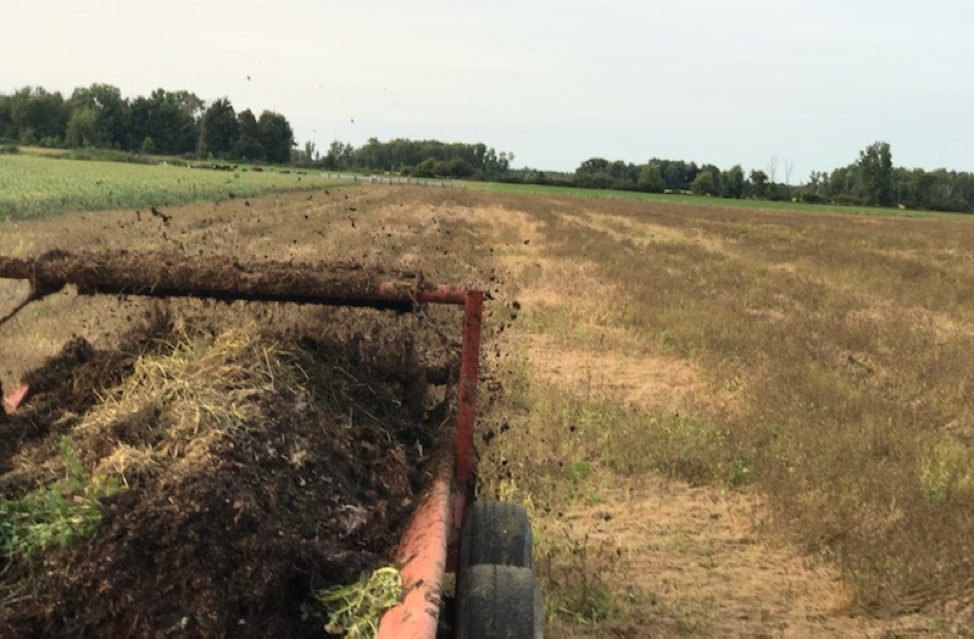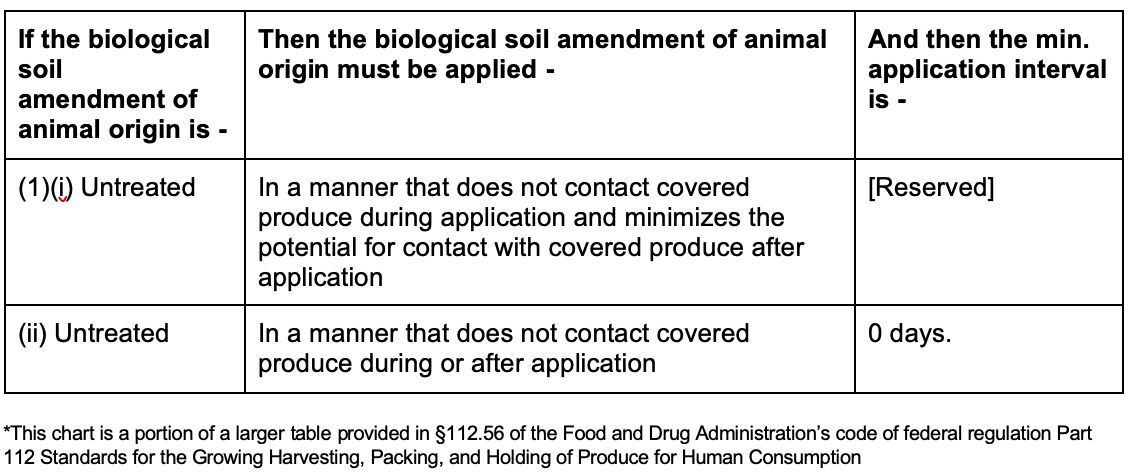Managing Risks When Using Raw Manure... Is it a Crapshoot?
Will a Predictive Model Help to Determine Safe Manure Use?
Blue Water Conservation District Produce Safety Technician

Let’s say a grower wants to use manure as a soil amendment on their produce fields. They know that there is some risk associated with the use of manure, but what IS the risk? How can they manage their risk? And what does the FSMA Produce Safety Rule and industry research say about using manure?
What is the risk?
For many farmers raw manure is the most accessible, affordable, and natural soil amendment available. However, raw manure of all types poses a risk to the safety of fresh produce. Manure can contain human pathogens and through its use near fruits and vegetables, it can spread human pathogens to produce. Pathogens harmful to humans that are often found in manure include: pathogenic E. coli, Salmonella, and Listeria monocytogenes. People who consume fruits and vegetables contaminated with manure can become ill, experience kidney failure and in some cases die. There are only a few known cases of food safety outbreaks linked to the improper handling and application of manure as a soil amendment. These include an outbreak of E. coli 0157:H7 from produce tracing back to a home garden in Maine where the soil was amended with cattle manure. Another was an outbreak of Listeria monocytogenes in Canada linked to cabbage grown in soil amended with sheep manure.
What does the FSMA Produce Safety Rule say about Manure Use:
The FSMA Produce Safety Rule provides this information on application and minimum application intervals for untreated biological soil amendments of animal origin. Biological soil amendments of animal origins are a category of soil amendments that includes raw manure.

This table can be confusing, here is what the FDA is saying:
If you are using an untreated biological soil amendment of animal origin, such as manure and the produce being grown will never come in contact with the applied manure during application or after application there is a 0 day minimum application interval (a minimum application interval is the amount of time required to wait between the application of manure and the harvest of the produce being grown, often referred to as a pre-harvest interval), meaning manure can be applied up to the day of harvest.
But if you use that same untreated biological soil amendment of animal origin (manure) and it does not touch produce during application, but produce may come in contact with manure after application the FDA has listed the requirement as [Reserved]. FDA has not yet decided what the requirement will be.
To determine a more feasible minimum application interval FDA will perform research which will result in the creation of a predictive model that can predict the survival behavior of the bacteria in manure.
As a predictive model is being developed farmers can continue to us the current standards in place and extending the time between manure application and harvest to the best of their ability. Farms can use safe practices when applying manure, clean and sanitize any tools that are used, and train staff on the risks that manure use poses and how they can protect produce from being contaminated. Farms can also consider composting manure. The process of composting can kill pathogens and create a safer product. The FDA has determined that it is safe to use composted manure up until the day of harvest if composting is done using one of two scientifically validate processes outlined in the Produce Safety Rule. Composting does however require additional space, time, tools, produce safety procedure, record keeping, and training.



 Print
Print Email
Email